Line cruisers such as "Ishmael." H.2
In principle, here our admirals can be understood. And the point is not that the fourth tower noticeably, 1,33 times, increased the weight of the onboard volley (although this too), but the fact that it was this number and the location of the main caliber artillery for battleships was then considered the best in Russia. Actually, this was indeed the case - as further practice showed, at least four-gun salvo was optimal for firing at long distances. Accordingly, the German and English dreadnoughts usually had 4-5 towers capable of participating in an airborne salvo: they fired half-salts of 4-5 guns (from one gun from each tower), the rest were reloading at that time. Such an approach was good for zeroing off with a “fork”, that is, following signs of falling, when the senior artilleryman was required to put one volley on the flight, the second - to undershoot the target, and then “half” the distance, seeking cover. Due to the fact that in these conditions, before the next volley it was necessary to wait for the fall of the previous one, time to recharge was quite enough.
However, the presence of 12 guns in the 4 towers made it possible to shoot with a “ledge” or “double ledge” - when the volley of the second (and third) quadruple guns was made without waiting for the previous one to fall: for example, the gunner received data from ranging stations that the enemy is from 65 cable in it, could give a volley of the first four guns at a distance of 70 kb, the second - 65 kb, the third - 60 kb and observe what volleys the target will be between. Or, give the first volley, wait for it to fall, adjust the sight and quickly give the next two volleys, trying to take the target "into the fork." Thus, the process of zeroing significantly accelerated.
In fairness, it should be noted that the author of this article cannot indicate the exact date from which the “double ledge” sighting was adopted in Russian navy. But in any case, the advantage of deploying 12 guns in comparison with 9 is obvious - in the latter case, it would be necessary to alternate four- and five-gun salvos, which was not convenient from the point of view of fire control, but the adopted (albeit even later) more advanced shooting methods fully justified such a decision. Here, however, the question may arise - if 12 guns are so profitable and convenient, then why, after the First World War, 8-9 guns became the standard weaponry?
But the fact is that with an equal overall weight of the guns, barbets and towers, three three-gun towers allowed to place heavier and more powerful guns than four three-guns. In addition, the presence of three towers instead of four reduced the length of the citadel and generally allowed for a more rational assembly of the ship. As a result, these considerations outweighed the usefulness of the 12 guns for a quick adjustment. However, it should be noted that in the United States and in the USSR, work was underway to create the Montana battleships and the 23-bis project with 12 * 406-mm guns - however, this is a completely different story...
Be that as it may, MGSH, no doubt, was inclined towards the 12 tools, especially since the difference between the 9-, 10- and 12-gun versions did not look too significant - while the leader of the competition , project №6 of the Admiralty Plant as it worked out closer and closer to the mark of 30 000 t normal displacement, 12-gun battle cruisers of the Baltic Plant projects and Blom and Foss had 32 240 - 34 100 t. And as a result of adding four towers, ships should have been stronger in the world (at least at the time of the bookmark).
In general, on the one hand, it seemed that the game was worth the time of manufacture, but on the other hand, there were known problems. First, it was politically wrong to cancel and reject the results of the just successfully held competition, because in this case the Naval Ministry demonstrated that it does not know what it wants and this would trigger attacks in the State Duma. Secondly, preliminary calculations showed that when adding the 4 tower, the construction cost of four ships will increase by 28 million rubles (from 168 to 196 million rubles) - a very significant amount, comparable to the cost of a linear ship of the Sevastopol type . However, in percentage terms, it did not frighten - the battlecruisers became the most expensive on 16,7%, however, this money was needed to be found somewhere - after all, nine-o-board ships were included in the budgets.
Interestingly, already at the final meeting on the choice of the winning project (which was the nine-gun battle cruiser of the Admiralty Plant), MGSh quite unexpectedly began to insist on accepting the “version XVII, the 707 project” - that is, one of the projects of Blom and Foss and Putilov factory. In fact, the Putilovsky Zavod did not participate in its development, and the matter was this: to the notice of all foreign contestants it was reported that, regardless of the nationality of the winning company, the battlecruisers would be built in Russia. If so, then in order to participate in the competition, foreign firms should “enter into cooperation” with any domestic enterprise: for Blom and Foss, the Putilov factory became such an enterprise.
The project itself was very interesting, although it did not fully meet the design tasks. It had a linear-elevated position of the towers, albeit with a weakened booking in 275 mm (according to the TTZ such barrets were to be defended by barbety, and the forehead of the towers reached 356 mm). Other parameters of the reservation, as far as can be understood, were sustained. Its displacement was 32 500 t, the nominal power of the turbines - 64 000 hp, forced - 26,5, and when forcing - 28,5 nodes.
However, the GCU technical council rejected the German project, arguing that ... the project is too German, and does not meet the requirements of the Russian shipbuilding in terms of the mass of the power plant per unit of power, or in the sense of the hull. All this is extremely strange, because it was the German power plants of battleships and battle cruisers that were, perhaps, the best in the world in terms of mass and power ratio. As for the hull, for example, watertight bulkheads were located more often than in the project of the Admiralty Plant (the distance between them at Blom and Foss was 7,01 m versus 12.04 m), that is, the number of watertight compartments was greater. The absence of the forecastle was “playing” against the German project, but, as can be seen in the sketch, it was planned to lift the deck to the stem, which to some extent eliminated this drawback.
Thus, it would be rather difficult to understand the motives of the GUK - the only sensible argument against the German project was perhaps that if it were adopted, the construction of the newest battle cruisers (even if only partially) should have been carried out at the Putilov factory, whose production facilities were obviously not ready to implement such a large-scale project. But really this question could not be solved by organizing the construction at the Baltic and Admiralty plants?
Nevertheless, the project was rejected: however, in parallel with the further development of the three-tower and 9-gun project of the Admiralty Plant, it was decided to design and four-tower. As a result, the Baltic and Admiralty plants simultaneously developed three- and four-tower projects each, and this time, 6 July 1912 r won the 12-gun project of the Baltic plant, although, due to many comments, it could not be considered final yet. And so, on the next day of July 7, on the basis of a report by the Chief of the Main Directorate of Customs, Admiral and Minister of the Sea IK Grigorovich made the final choice in favor of the four-towed ship.
All anything, but where to get money for such an innovation? The problem was that ik It was extremely difficult for Grigorovich to “push” through the State Duma the “Strengthened Shipbuilding Program of the Baltic Fleet in 1912-1916”, according to which the battlecruisers were to be built, but nevertheless he succeeded. However, during the 6 debates in May 1912, the maritime minister promised that if this program was approved: "... during the 5 years there will not be any additional demands from the Maritime Ministry". And, of course, I.K. Grigorovich could not get out in just a month after 2 his statement with the requirements of new tools! And how would he motivate it? “We held an international competition for three-tower ships here, but then we thought and decided that four-tower ships are still better”? Such approaches would indicate the irregularity of the Maritime Ministry, and no money IK. Grigorovich, of course, did not receive, but the reputational costs would have been much higher.
In other words, under the circumstances, it was impossible to knock out additional funding, which meant it was only necessary to act within the framework of the approved budgets - but they built the construction of three-tower cruisers! Something was possible to obtain by redistributing funds from light cruisers to linear cruisers, but this was not enough and it became clear that one could not do without savings on the battle cruisers themselves. And it was possible to save only on speed, or on booking, while speed, whatever one might say, was considered the most important parameter of the battle cruiser. In fact, some savings came over her - the requirement to ensure 26,5 nodal speed was replaced by six hours for 12 hours, and the full speed (when forcing mechanisms) was reduced from 28,5 to 27,5, but, of course, the main “economic effect” was to give a weakening of the reservation .
Admiralty and Baltic factories were instructed to rework projects in accordance with previously made comments, as well as the need to reduce costs. Already 27 July projects were reviewed again, they were quite close constructively, but none of them was found to be satisfactory, so it was decided to instruct the plants to further refine the work together. The result of this creativity was the draft of the battle cruiser with a displacement in 32 400 t., Which was approved by the naval minister and who was to become in the future a battle cruiser of the type “Izmail”.
weaponry
So, the main caliber of the Izmail battlecruiser was to make 12 356-mm / 52 long-barreled guns with truly royal characteristics: a 747,8 kg projectile was to be flown at an initial speed of 823 m / s. A gun with such characteristics obviously outpaced any competitors: the muzzle energy of this gun surpassed the Japanese 356-mm artillery system by 25%, and the American 356-mm / 50, which was installed on the New Mexico and Tennessee battleships, by almost 10%. Moreover - even 356-mm guns of the British battleships of the Second World War of the “King George V” type fired only 721 kg with a projectile with an initial speed of 757 m / s!
Without a doubt, the armament of the Izmail-class battlecruisers with such powerful cannons, and even in the number of 12 units, would have to take him to the first place among all the 343-356-mm dreadnoughts of the world. But the creation of such an instrument and the organization of its mass production was a most complex technical and technological task: below we will look at how the Russian Empire managed to cope with it.
It must be said that the need for larger guns than 305-mm was realized quite early in Russia - in June 1909 Mr. Chief Inspector of Naval Artillery A.F. Brink reported to I.K. Grigorovich, shortly before that, in January of the same year, he assumed the post of Comrade Maritime Minister (as the deputies were then called) on the need to arm the next series of dreadnoughts with 356-mm guns. Considering the fact that the Orion, the firstborn of the British super-dreadnoughts, was laid in November 1909 g, and the fact of its arming with 343-mm caliber guns was hidden for some time, perhaps we can safely say that A.F. Brink did not “monkey”, but came to the need to arm the main forces of the fleet with more powerful guns than the 305-mm itself.
It must be said that I.K. Grigorovich and this time proved to be a visionary and energetic leader, as he immediately supported A.F. Brink, allowing the latter to design and build a prototype of an 356-mm gun and provide the necessary funding for the work. Nevertheless, the matter dragged on: the reason was that it was precisely at this time that the Russian naval artillery was moving away from the concept of “light projectile - high initial velocity” in favor of much heavier ammunition. The case for our gunners was quite new, because the transition to light shells took place quite a long time ago, and even the newest 305-mm / 52 cannon from the Obukhov factory was originally designed for 331,7 kg shells. As is known, as a result of a fundamental change in the concept for this gun, ammunition weighing 470,9 kg was created; The price for this was a significant reduction in the initial speed, from the originally estimated more than 900 m / s to 762 m / s. In this form, the domestic twelve-inch was one of the best guns of its caliber, in terms of combat qualities in no way inferior to the most advanced artillery systems in the world.
However, the transition to heavy ammunition took time - no wonder that the 470,9 kg “suitcases” were called “1911 g specimen shells”. In general, of course, the 305-mm / 52 gun and the nomenclature of its ammunition became a real masterpiece of artillery, but their creation was strongly hampered by the work on a larger caliber gun: the outfit for the production of an experimental 356-mm gun was issued only in January 1911. And besides, as is well known, it is not enough to invent a weapon and produce it in a single copy - it is necessary to set up mass production, but this also caused problems.
Therefore, when the question of equipping the Black Sea dreadnoughts with 1911-mm artillery systems arose in 356, it quickly became clear that the capabilities of the Obukhovsky plant simply did not allow this - acquiring domestic cannons of this caliber would delay the delivery of dreadnoughts to the fleet for at least 1,5. Then for the first time an international competition was announced for the 356-mm gun for the domestic fleet, but the choice was made in favor of the domestic 305-mm artillery system.
However, the 356-mm gun was considered the only option for the linear cruisers from the very beginning, so there could be no question of any replacements, while the need for such artillery systems was quite large. In total, it was planned to manufacture 82 of such weapons, including 48 for the four battlecruisers and 12 spare guns for them, 4 guns for the Sea Range and 18 - for the armament of the Revel Sea Fortress. Obukhov plant was given quite serious subsidies for the expansion of production, but even so he could not meet the specified need in a reasonable time. As a result, the Obukhivs received an order for 40 356-mm cannons, and 36 was also supposed to be supplied by the Russian Joint-Stock Company of Artillery Plants (RAOAZ), which in 1913 began the construction of the largest artillery production at Tsaritsyn (apparently, the outfit for the remaining 6 guns were never issued). Interestingly, one of the largest shareholders of RAOAZ was the well-known Vikkers firm in some circles.
It seems that everything should have ended well, but the creation of the national 356-mm artillery system was adversely affected by the 2 factor: the beginning of World War I, and the absence of any significant machine-tool base in the Russian Empire. In other words, as long as the British or French were ready to supply us with machines for the production of artillery guns, everything went well, but as soon as the latter were forced to switch to “everything for the front, everything for victory” and orders of a foreign, even if the Allied power turned out to be thirty third place - the Russian empire had enormous problems. The supply of equipment to the Obukhov and Tsaritsyn plants was delayed and disrupted, and without this it was impossible to even dream of ensuring that the 82, but at least even the 48 guns for the battlecruisers under construction.
Thus, the Maritime Ministry did not have any choice, and it had to order 356-mm guns abroad - it was designed in such a way that the Obukhov plant had to continue the production of such guns at its existing production facilities, but RAOAZ It was allowed to put 36 guns not own, but foreign production. Taking into account Vickers as a shareholder, it was easy to guess who would get this order. However, in the military conditions it was not bad: firstly, the Vickers experts perfectly imagined the draft of the Russian cannon, and secondly, the English professionalism made it possible to hope for timely delivery - as you know, the spoon is good for dinner, and in war The expression manifests itself most clearly.
Nevertheless, the Russian Empire did not receive the required number of guns to equip Izmail combat cruisers - as of May 1917, 10 356-mm British-made guns arrived in the country, the eleventh sank along the way with the Komba transporting it ", And five more of these guns were produced, but they remained in England. The Obukhov plant, with the exception of the prototype, did not pass a single gun of this caliber, although it had 10 of such guns in a very high degree of readiness. I must say that in some sources there are other data on the total number of 356-mm guns, but the above are perhaps the most common.
Thus, we can state the first and very sad fact - the artillery of the main caliber on the battle cruisers of the “Izmail” type did not ripen in any reasonable time period. As for the quality of artillery systems, alas, there are also a lot of questions left.
The fact is that the full test cycle of the weapon never passed, and then the Russian Empire collapsed, giving way to Soviet power. The armed forces of the Land of the Soviets, without any doubt, needed heavy armament. Completion of the battle cruisers was beyond the power of the USSR (we will return to this issue in the future), but not to use ready (and almost ready) 356-mm tools of English and domestic production would be uniform waste. Therefore, in the USSR, 1930 began work on the creation of the TM-1-14 rail artillery, using the British and Obukhov 356-mm guns as weapons.
However, the tests of these artillery systems led to extreme disappointment - as it turned out, the guns were not strong enough. When firing a charge that provided the “contractual” initial speed of 823 m / s, six guns simply inflated, insufficient longitudinal strength of artillery systems was also detected. All this led to the fact that for railway installations the powder charge and the initial velocity of 747,8 kg of shells, which now amounted to only 731,5 m / s, were seriously reduced.
Alas, with such an initial velocity of the projectile, according to the muzzle energy, the domestic 356-mm / 52 gun from recognized leaders turned into outsiders - now it was losing not only the American 356-mm / 45 and 50-caliber guns, which left it far behind, and weaker Japanese 356-mm art system, although quite a bit. True, there is one very important question - the fact is that it is not entirely clear why the initial speed of the domestic 14-inch projectile in the TM-1-14 railway installations was “reduced” to such low values.
Without any doubt, it is likely that only in this way could the acceptable survivability of the barrel be ensured, and thus the 731,5 m / s - the maximum allowable initial velocity for the 356-mm / 52 guns. But ... it can also be assumed that the platform itself played a role here - the creation of railway artillery was quite a new and difficult task, despite the fact that the recoil when firing fourteen and a half inches was enormous. Perhaps the reduced speed is to some extent due to the fear of damaging the railway platform or tracks. However, this is no more than guesswork, and in sources known to the author of this article, a decrease in the initial speed of 356-mm / 52 guns is motivated only by the weakness of the guns themselves. Accordingly, in the future we will proceed precisely from this statement.
As we have said, with an initial speed of 731,5 m / s, the 356-mm / 52 gun was less than the Japanese cannon in muzzle energy (by about 2,8%). However, the situation was largely straightened out by extremely powerful armor-piercing and high-explosive shells. It is clear that in 747,8 kg "ingot" you can put more explosives than in 578-680,4 shells of other states, but here our superiority turned out to be enormous. Thus, 673,5-kg Japanese and 680,4 kg American armor-piercing 356-mm projectiles contained 11,1 kg and 10,4 kg BB, respectively - the American shell, despite its greater weight, contained a smaller amount of BB. The Russian projectile had 20,38 kg of explosives, that is, almost twice the size of Japanese and American. According to this indicator, the 635-kg projectile of the British 343-mm gun, which had the 20,2 kg of liddite, could argue with the domestic armor-piercing ammunition, but it was necessary to understand that this projectile was in essence more likely semi-armored. A full-fledged British 343-mm "armor", created by the end of the First World War, was equipped with 15 kg of shellite. In fact, the Russian 356-mm armor-piercing projectile carried almost the same amount of explosives as the British 381-mm “greenboy” (the latter had 20,5 kg of shellite).
Among the land mines, the Russian 356-mm projectile also appeared to be ahead of the entire planet - the weight of the explosive in the projectile of the 1913 model reached 81,9 kg. At the same time, Japanese ammunition of this type (projectile weight - 625 kg) had only 29,5 kg of explosives, the Americans used lightweight high-explosive shells weighing only 578 kg, which were equipped with 47,3 kg of explosives. But the English bomb, despite the smaller mass (635 kg), was equipped with almost the same amount of liddite - 80,1 kg.
But alas, and there was not a fly in the ointment. As you know, already after the famous shelling of the battleship Chesma, which reproduced elements of the armor protection of the dreadnoughts of the Sevastopol type, were already planned, one more test was planned to determine the best armor protection scheme for the newest Russian battleships. To this end, two differently reserved compartments were built, on which it was supposed to shoot 305-mm and 356-mm shells, both armor-piercing and high-explosive, but the Russian Empire did not have time to carry out these tests. They were already built under Soviet rule, in 1920 g, and their results turned out to be very disappointing for armor-piercing 356-mm shells. So, Professor L.G. Goncharov in his work "Course naval tactics. Artillery and Armor "writes about these tests (spelling is preserved):
2. Confirmed great importance in the manufacture of shells. So the action of the armor-piercing 305 mm (12 ”) projectiles was higher than the same 356 mm (14”) projectiles. This is explained by the fact that the production of the first shells was delivered extremely thoroughly and satisfactorily, and the 356 mm (14 ”) shells were the first experimental batch with the manufacture of which the plant had not yet been able to cope with.”
There is no doubt that the 356-mm projectile weighing 747,8 kg with 20,38 kg of explosives of excellent armor-piercing qualities was quite possible. The explosive content in it was 2,73%, which is even less than that of 305-mm domestic projectiles, in which this indicator reached 2,75% (12,96 kg, the mass of explosives and 470,9 kg is the mass of the projectile). But we have to admit that the Obukhov plant could not immediately cope with the dressing of 356-mm shells, and would it have been able to make it if he had to master their production during the war years? This question remains open, and if so, there was a danger that even if the battle cruisers of the “Izmail” type would have been completed, they could have armed themselves with armor-piercing shells of far from better quality.
All of this together suggests that “the unparalleled vunderwaffe in the world” from 356-mm / 52 guns did not work out, rather (after bringing armor-piercing projectiles to mind) we could talk about strong middling: obviously, nevertheless were better than the Japanese guns of the same caliber that were on the Congo battlecruisers and battleships of the Fuso and Ise types, but here’s an American 356-mm / 50 cannon, capable of sending an 680,4 missile with an initial speed of 823 m / sec and having about 15% more muzzle energy, perhaps, it looks like more preferable, even despite the smaller power of the projectile. On the other hand, with American guns, too, not everything is simple - their performance characteristics look too good, which together with some indirect data (including, for example, the fact that the author has armor tables listed in Russian-language literature for American 356-mm shells are based on the speed of 792 m / s and 800 m / s) may indicate some re-penetration of American 356-mm / 50 guns. However, this is again just a guess.
But there is no doubt about it, it’s because the shooting of 747,8 kg with an 356-mm projectile with an initial speed of 823 m / s. was absolutely impossible, here our gunners, unfortunately, encroached on the level of technical perfection that was unattainable at that time. Alas, this also implies something else: all the modeling of battles between the Ishmaels and battleships and battlecruisers of other powers (as it was done, and we will see this later) was built on a nonexistent basis, that is, on the presence of domestic guns of record ships, of which in fact, they could not have.
Продолжение следует ...
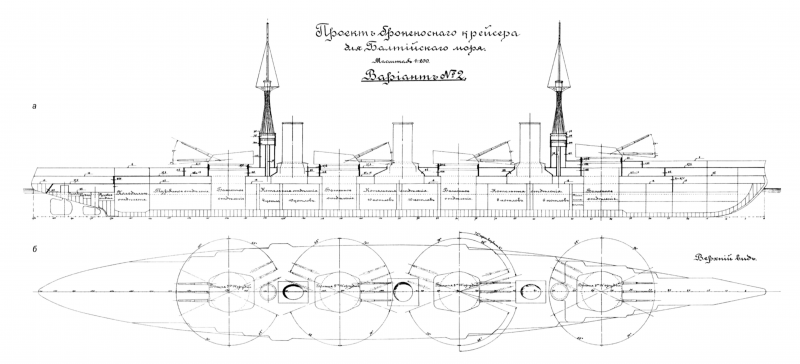
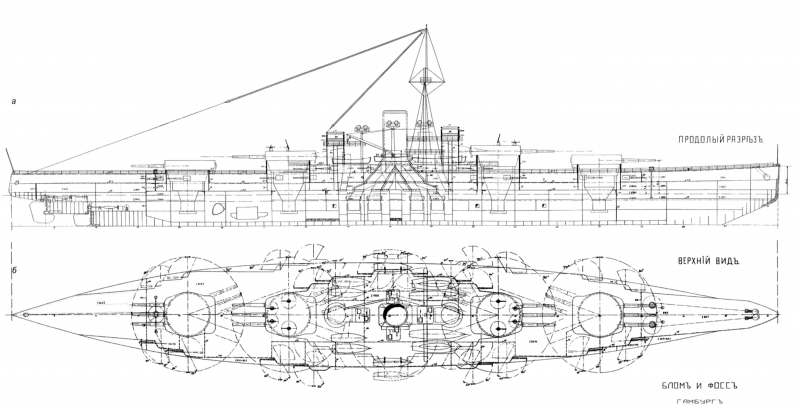
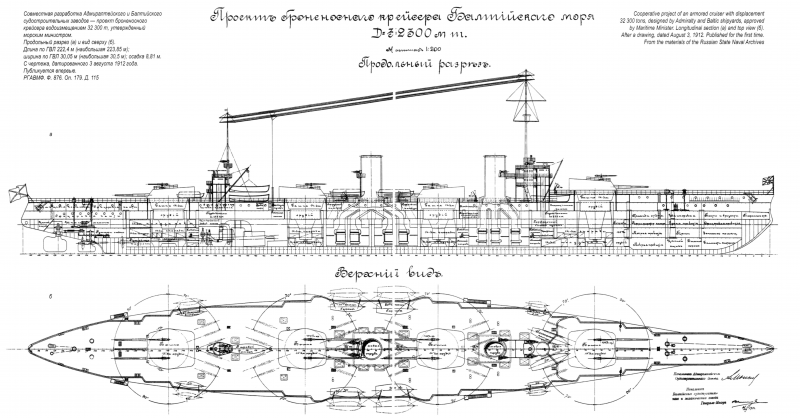
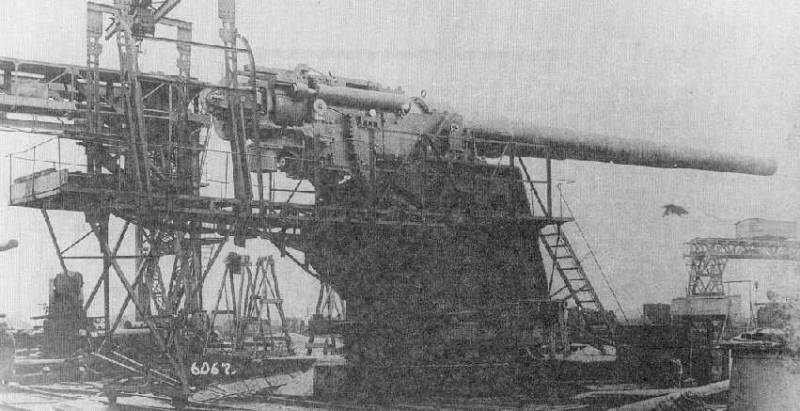
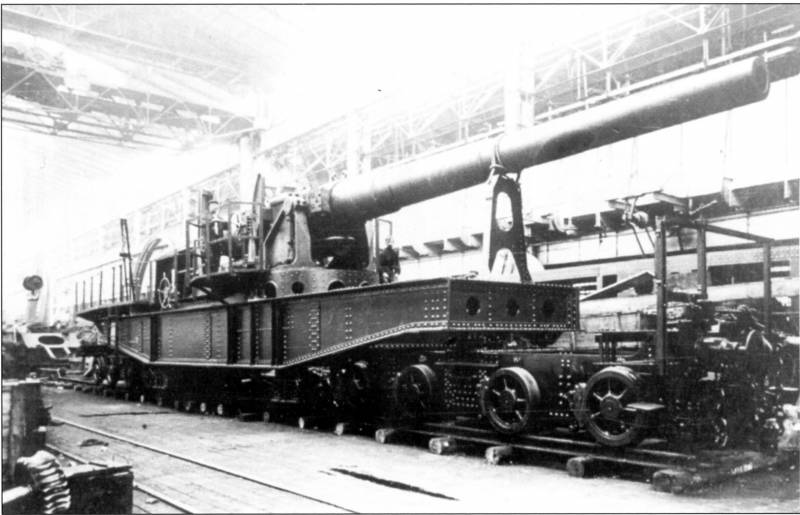
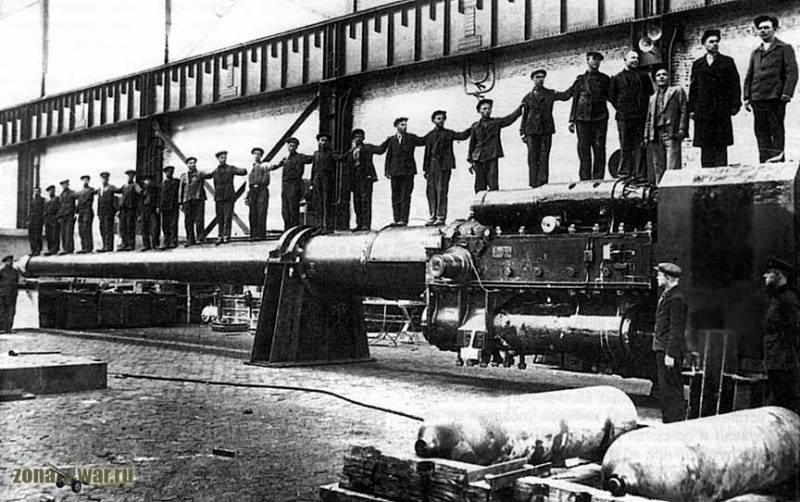
Information